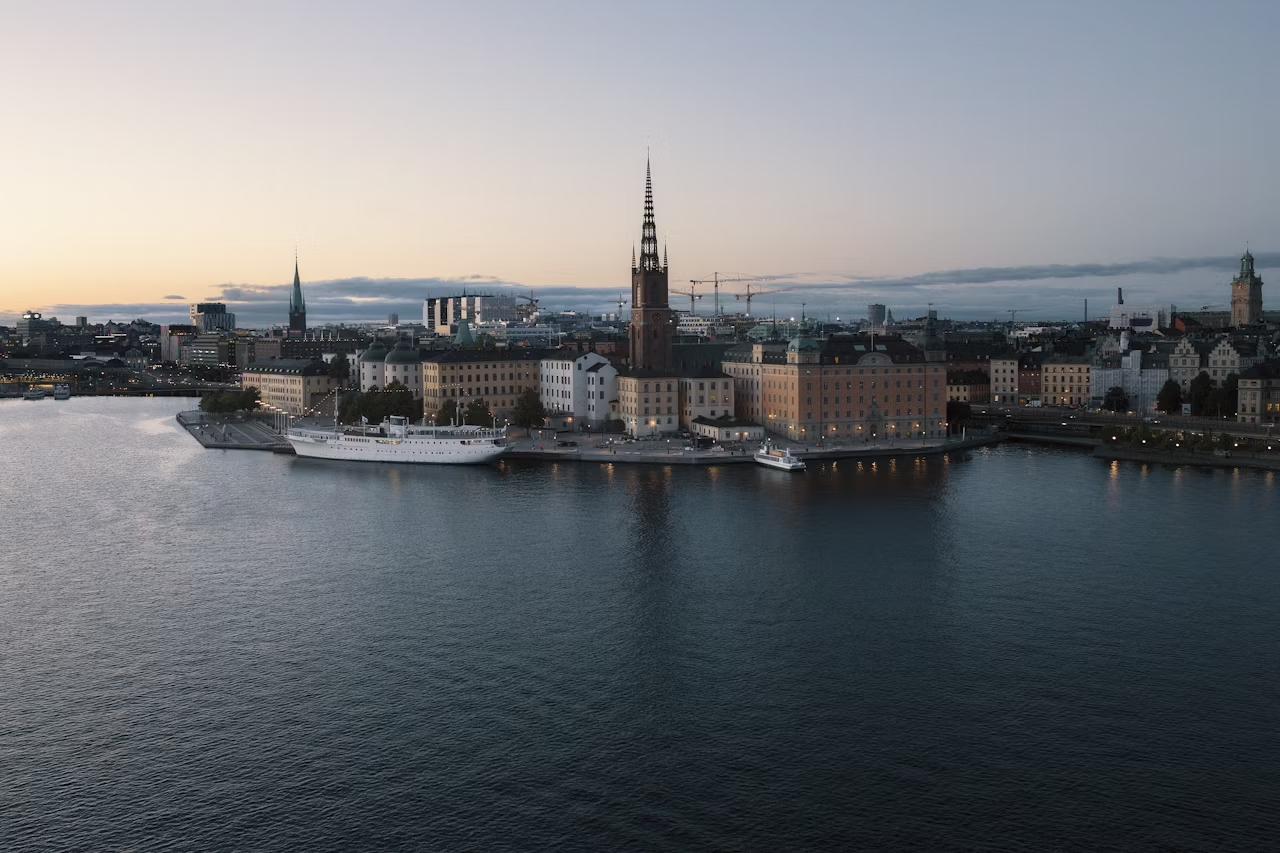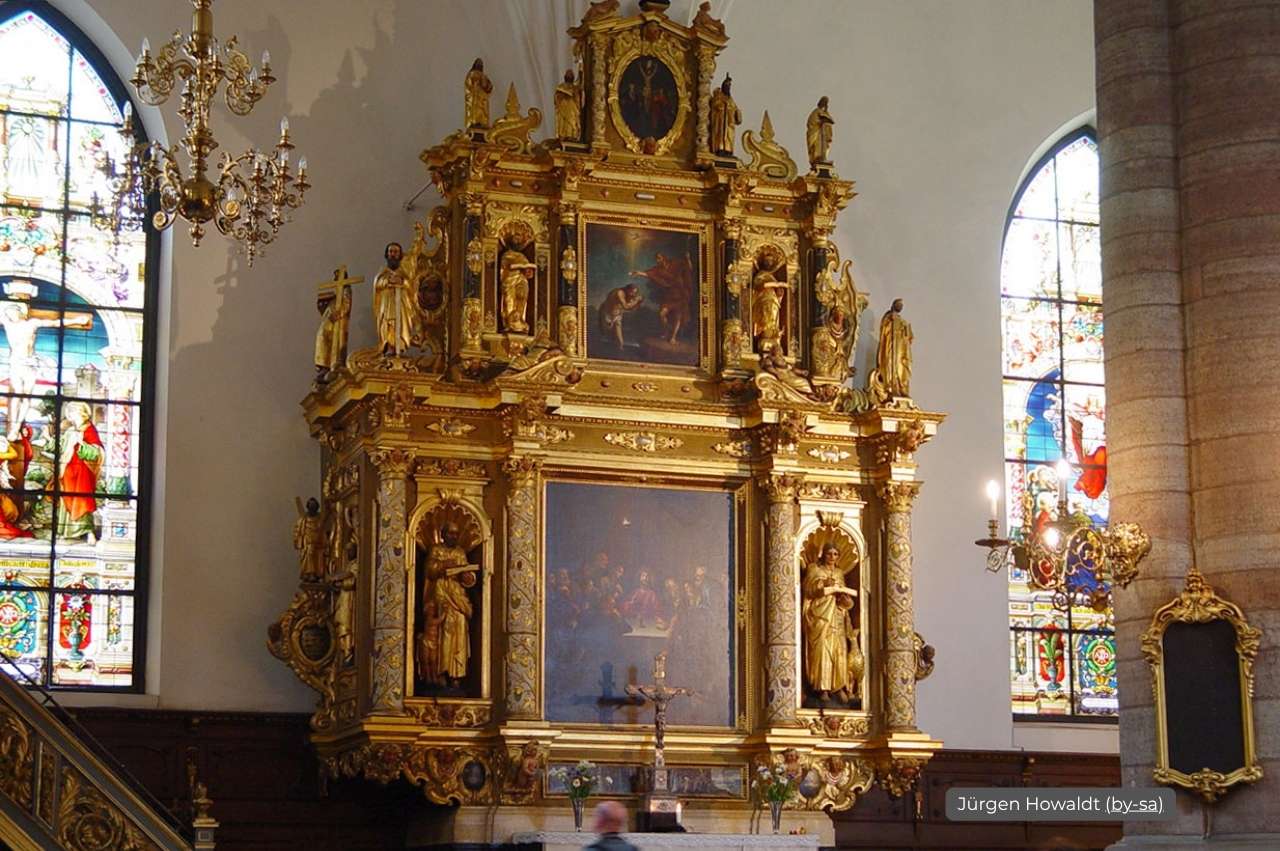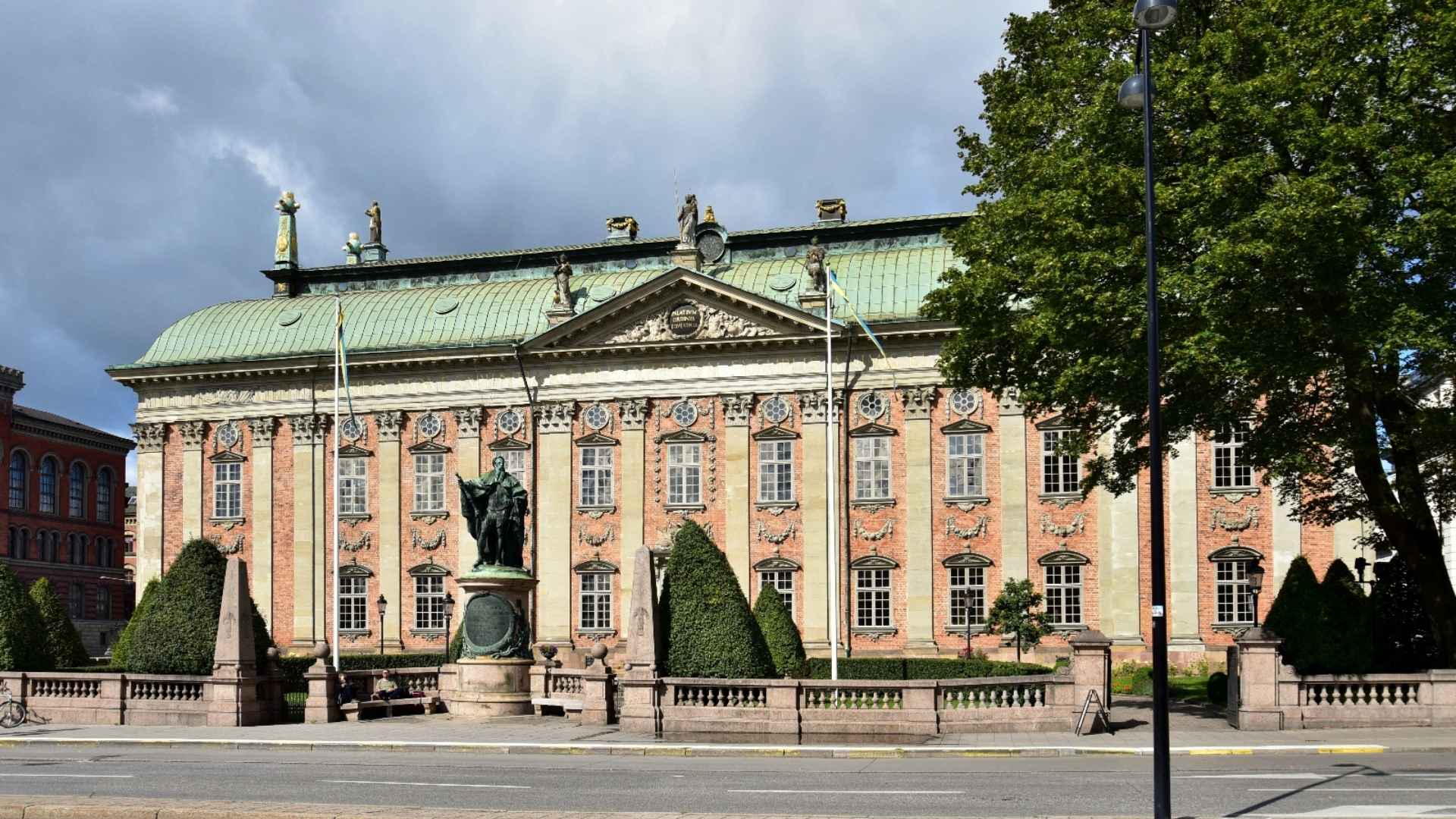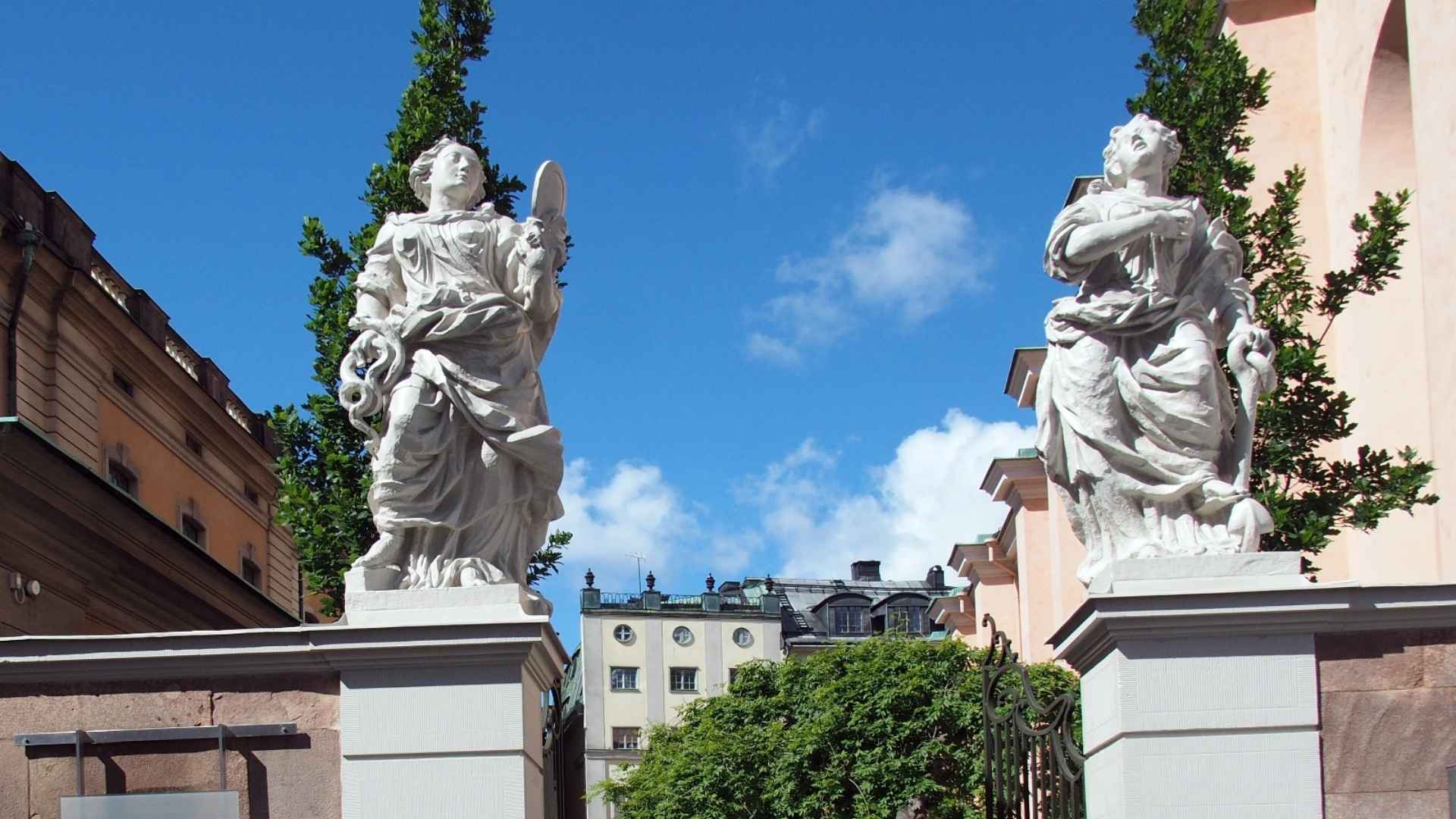TLDR
The German Church (Tyska kyrkan) is a baroque Lutheran church in Gamla Stan built by Stockholm's German merchant community. You can visit the interior and climb the tower for old town views.
The German Church's copper spire catches your eye before you even realize what you're looking at. Rising above Gamla Stan's medieval roofline, this baroque beauty stands out without trying too hard.
After visiting several times, I've learned that the German Church rewards visitors who appreciate Protestant church architecture and the history of Stockholm's merchant communities.
It's less famous than Stockholm Cathedral but arguably more interesting for what it reveals about the city's international connections.
What is the story behind The German Church?

The German Church was built between 1638 and 1642 to serve Stockholm's German-speaking merchant community, which had become influential in the city by the 17th century. German traders settled in Stockholm during the medieval period, establishing a quarter in Gamla Stan.
The congregation dates back to the 1570s when they first received permission to conduct services in German. The current baroque building replaced earlier structures on the same site. Architect Hans Jakob Kristler designed the church in the North German baroque style.
The church served and still serves Stockholm's German-speaking Lutheran community. It survived fires that destroyed much of Gamla Stan and remains an active parish.
Why is there a German church in Stockholm?
Stockholm's strategic location on Baltic trade routes attracted German merchants from Hanseatic cities like Lübeck during the medieval period. These merchants formed a significant community with their own language, customs, and religious needs.
The Swedish crown granted Germans trading privileges and the right to worship in their own language. By the 1600s, German merchants dominated much of Stockholm's commerce, justifying a dedicated church.
The building also represented their economic and social status in the city. Similar German churches exist in other Baltic cities where Hanseatic traders settled. The church reflects Stockholm's historical role as an international trading hub rather than an isolated Scandinavian capital.
Can you visit The German Church?
Yes, you can visit The German Church, and it's actually more accessible than many Stockholm churches. The church is typically open daily during summer months (June-August) with reduced hours in winter.
Entry to the main church is free. You can climb the tower for a small fee (around 40-60 SEK) to get views over Gamla Stan's rooftops. Services are still held in German on Sundays.
The interior features baroque decoration, a beautiful pulpit, and royal galleries. Photography is usually allowed but check current rules. The church hosts occasional concerts and cultural events. It's less crowded than major tourist churches, offering a more peaceful visiting experience.
What can you see inside?
The interior showcases North German baroque style with elaborate woodwork and decoration. The pulpit from the 1660s is particularly impressive with detailed carvings. Royal galleries where Swedish monarchs sat during services line the walls. The altar features baroque artwork and gilding.
The church has surprisingly rich decoration for a Lutheran church, reflecting the merchant community's wealth. Stained glass windows let in colored light. The organ is still used for concerts.
Compared to the more austere Stockholm Cathedral, the German Church feels more ornate. The tower climb offers narrow stairs and eventually rewards you with excellent views over Gamla Stan's orange and red rooftops toward the water.
When is the best time to visit?

Summer months (June-August) offer the most reliable opening hours with daily access. The church is open afternoons most days, but verify current schedules since they change seasonally.
Sunday mornings have services in German, which adds authenticity but limits sightseeing. Weekday afternoons provide quieter visiting conditions than weekends.
The tower is only accessible during open hours with staff present.
Late afternoon offers good light through the stained glass windows. Winter visits are possible but hours are significantly reduced and the church may close for periods. Attending a concert if one is scheduled provides the best way to experience the space's acoustics and atmosphere.
How much does it cost?
Entry to the main church is free, which is generous for a Stockholm attraction. Climbing the tower costs approximately 40-60 SEK for adults, with possible discounts for students and children. The tower fee is reasonable considering the views and the church's maintenance costs. Concerts may have separate ticket prices.
There's no pressure to donate but a contribution box exists if you want to support the building's upkeep. Compared to Stockholm's major museums charging 150-200 SEK, the German Church offers good value, especially since the main church is free. The tower climb is worth the modest fee if weather is clear.
Why is Gamla Stan famous?
Gamla Stan is famous as one of Europe's best-preserved medieval city centers, dating back to the 13th century. The neighborhood features narrow cobblestone streets, colorful buildings, and significant historical sites including the Royal Palace and Stockholm Cathedral. It's where Stockholm was founded and remained the city's heart for centuries.
Stortorget, the main square, saw the Stockholm Bloodbath in 1520. The area maintains medieval street patterns despite fires and reconstructions.
Today it's Stockholm's most tourist-heavy neighborhood with restaurants, shops, and museums. The architecture spans medieval to baroque periods. Gamla Stan's preservation makes it special compared to European cities that demolished their old quarters for modernization.
What is the main religion in Stockholm Sweden?
The main religion in Stockholm and Sweden broadly is Lutheran Christianity, specifically the Church of Sweden (Svenska kyrkan). However, Sweden is now one of Europe's most secular countries with low church attendance. Only about 10-15% of Stockholmers attend religious services regularly despite approximately 53% nominally belonging to the Church of Sweden.
The Lutheran church was Sweden's state church until 2000 when church and state separated. Stockholm has growing religious diversity with Muslim, Catholic, Orthodox, and other communities. Many historic churches like the German Church function more as cultural monuments than active worship centers.
Was Sweden ever occupied by Germany?
No, Sweden was never occupied by Germany during World War II. Sweden maintained official neutrality throughout the war, though this neutrality was complicated and controversial.
Sweden allowed German troops to transit through the country to occupied Norway and sold iron ore to Germany. The country also provided refuge to Jews and resistance fighters from neighboring countries. Swedish neutrality meant avoiding occupation but making compromises that historians still debate. Denmark and Norway were occupied, making Sweden's position difficult.
The German Church's presence in Stockholm predates WWII by three centuries and relates to medieval trade, not 20th-century politics. Sweden's WWII neutrality remains sensitive since it involved both resistance and accommodation.
What else should you see nearby The German Church?
Gamla Stan concentrates Stockholm's essential historical sites within easy walking distance. Beyond the German Church, priority attractions include:
- Stockholm Cathedral, Sweden's coronation church since the 1300s
- Royal Palace with museums and changing of guards
- Stortorget square and the Nobel Prize Museum
- Riddarhuset (House of Nobility) with baroque architecture
- Riddarholmen Church where Swedish monarchs are buried
The entire old town takes 3-4 hours to explore thoroughly. The German Church sits on Svartmangatan street, central to Gamla Stan's main sites. Most attractions are within a 5-10 minute walk.
Is it worth seeing The German Church?

Worth seeing if you're doing thorough Gamla Stan exploration or if you appreciate church architecture. The baroque interior is genuinely beautiful and the tower views are excellent. The historical significance of the German merchant community adds depth beyond just architectural appeal.
However, if you're short on Stockholm time, the Royal Palace and Vasa Museum probably deserve priority. The German Church works well as a 20-30 minute stop while wandering Gamla Stan rather than a destination requiring special effort. The free entry lowers the risk of disappointment.
For visitors interested in Stockholm's trading history or Protestant baroque architecture, it's definitely worthwhile. It offers something different from the typically austere Scandinavian Lutheran churches.
Explore Stockholm's Gamla Stan with StoryHunt
Want to discover Stockholm's medieval old town with expert audio guidance? StoryHunt's Personal Tour Guide creates customized audio walks through Gamla Stan's winding streets based on your interests - whether that's royal history, church architecture, merchant heritage, or Viking-era Stockholm.
The interactive map guides you between churches, palaces, and historic squares with stories about the German merchants, Swedish monarchs, and medieval citizens who shaped the city. Explore at your own pace, stop for Swedish fika at cozy cafes, and create an experience driven by curiosity rather than following rigid tour schedules.

.webp)











.avif)





